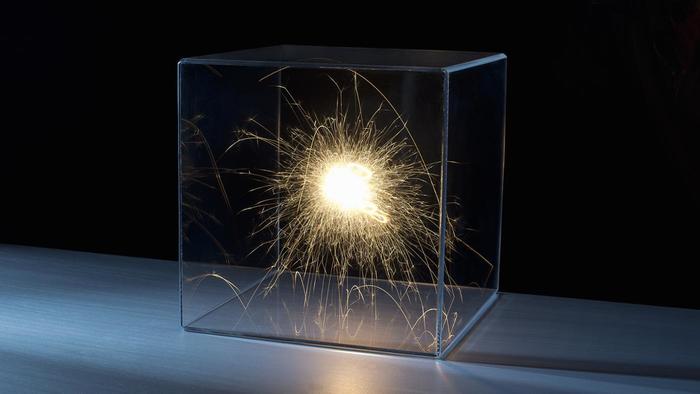Welcome to the Tale of this week! So far, we explored some of the things can happen when the engineering way of thinking re-thinks biology, or vice versa. But what if we intend that encounter between worlds in a more down-to-earth sense? What if purely technological devices could host natural biological parts, keeping the border between what is alive and what it is not neat? That corresponds to the construction of a system which is hybrid. Some components come from one world and other parts arrive from the other: we are going towards the place in Bio-Land where bio-hybrid systems take shape. [SPOILER ALERT!] Soft-robotic Ray makes one of the latest achievements in the field. But we are going to start our exploration somwhere else…
It must be said the land to explore is quite large, but one principle holds everywhere: for such systems for being functional, the different components must be able to communicate in some way. Just like Alice and the biologists started to do at the beginning of this journey, such elements need to find a common language as well.

There are different ways a technological device and a living system can communicate. One of the natural contact points in this sense is electricity. In fact, biological membranes are able to generate electrochemical gradients across compartments. Such gradients can constitute a pool of potential energy for the cell, which can use it in different ways and for different purposes. Particular cell types are able to produce specific and structured alterations of electrochemical gradients. Such changes can propagate across the membrane like waves, due to the intrinsic bio-molecular properties of the membrane itself. The waves can take different forms and make for signals between cells. A very famous wave of that kind is the action potential, whose shape does not change along propagation. As you can imagine, we are talking about nervous cells in pluricellular organisms.

And, we just crossed the sparkling gate of the realm of electrophysiology. Here, very peculiar inhabitants of Bio-Land take measurements of voltage or current changes on a variety of scales, from single ion channels proteins to whole organs, since the 1930s. In that period, the squid giant axon is studied as the structure for action potential propagation, with the voltage-clamp technique. That is one of the possible uses of the patch-clamp technique, which allows for monitoring and actively modifying the electrical properties of a single cell. That works well with nervous cells, but can be done with other cellular types too. Generally speaking, changes in the electrical properties of the cell membrane correspond to different activation states of its channels, which are in turn related to diverse functional variations at the intracellular level. That allows for accessing functional information at the bio-molecular scale inside the cell through the electrochemical behaviour of membranes.
This is one of the ways cells and digital devices can communicate. And that can be exploited for the construction of a bio-hybrid system, by using electric signals as the words of a common language between cells and technological devices. What an electrifying experience for Alice and the biologists!
 Roberta Bardini
Roberta Bardini
